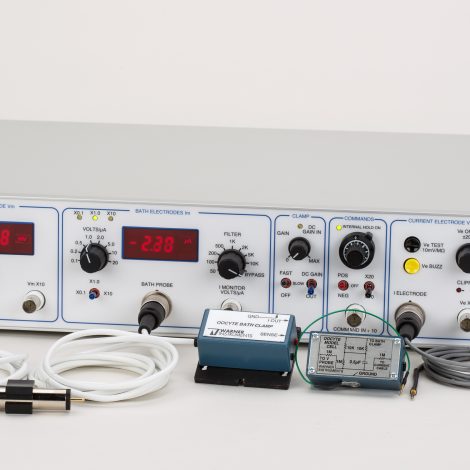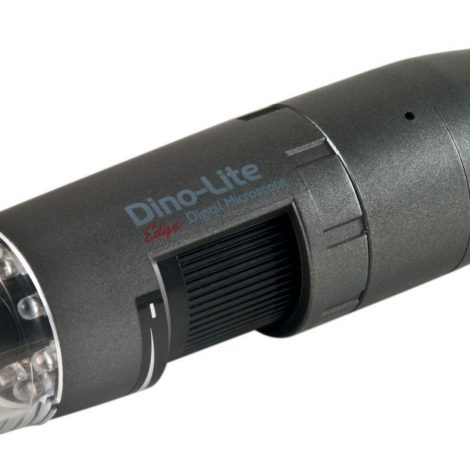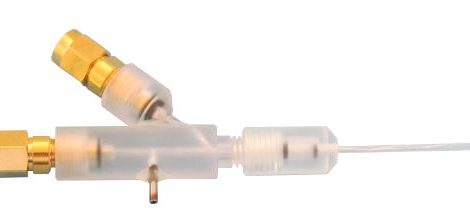The OC-725D Oocyte Clamp is designed for two-electrode, whole-cell voltage clamping of Xenopus oocytes. The dedicated design of the OC-725D includes such features as high compliance voltage (±180 V) and unique bath clamp circuitry. These same features also make the OC-725D ideal for clamping other large cells and cell structures such as squid axons. Improvements to this version include a 4-pole Bessel filter on the I Monitor output with a range of 50 Hz to 10 kHz, or full bandwidth. The electronics have been redesigned to improve efficiency and reliability.
Fast Stable Voltage Clamping
The OC-725D combines high AC and DC gains, and a voltage compliance of ±180 volts to insure fast, non-saturating clamp performance under nearly any condition. The AC clamp gain is variable up to 2000. An additional DC gain of 1 x 106 may be employed for high conductance cells (leaky oocytes).
Two clamp speeds are available: The Slow mode is used for screening oocytes or for applications not requiring fast response times. The Fast mode is used for accurate voltage clamp of fast whole cell currents. Clamp response time in the Fast mode is 550 µsec (10-90% rise time) when applying a 100 mV step to the included model cell*.
Improved Bath Clamp Headstage
Voltage Headstage Probe
Voltage & Current Meters
Independent meters provide simultaneous displays of membrane voltage Vm and membrane current Im. To assure proper impalement of the current electrode, the current meter displays membrane potential Ve from the current electrode before the clamp circuit is turned on.
Clamp Commands
The internal Hold control is a ten turn potentiometer with two ranges; ±0 to 100 mV (x10) and ±0 to 200 mV (x20). External command signals applied to Command IN ÷10 are attenuated to reduce noise from the command source. Hold and external commands are summed.
Additional Features
Electrode Holders
Two vented electrode holders with silver wires are typically required with the clamp; a straight type for use with the voltage headstage and a 45° type with mounting handle for use with current electrodes. Vents have been added to the electrodes to prevent pressure build-up inside the electrode which can damage oocytes. A two meter length cable assembly is provided to connect the current electrode holder to the clamp.
Dual Oocyte Studies
Some studies, such as voltage control across gap junctions, require the clamping of two oocytes in a common bath using two voltage clamps. The combined currents from both oocytes cause problems since the bath clamp headstage cannot separate the individual currents and therefore cannot provide effective clamping.
OC-725D has two features to address these problems:
- An internal switch permits measurements of the current in series with the current electrode instead of in parallel in the bath
- Optional differential voltage headstages (Model 7255 DI): The differential measurement subtracts the voltage drop across the series resistance in the bath, which is normally eliminated by the bath clamp
Supplied Hardware
The OC-725D is supplied with:
- 7250V voltage headstage
- 7251I bath clamp headstage
- 7259C current cable
- Model cell, rack mount hardware
Purchased separately
- One straight and one 45º electrode holder is also needed and must be purchased separately








